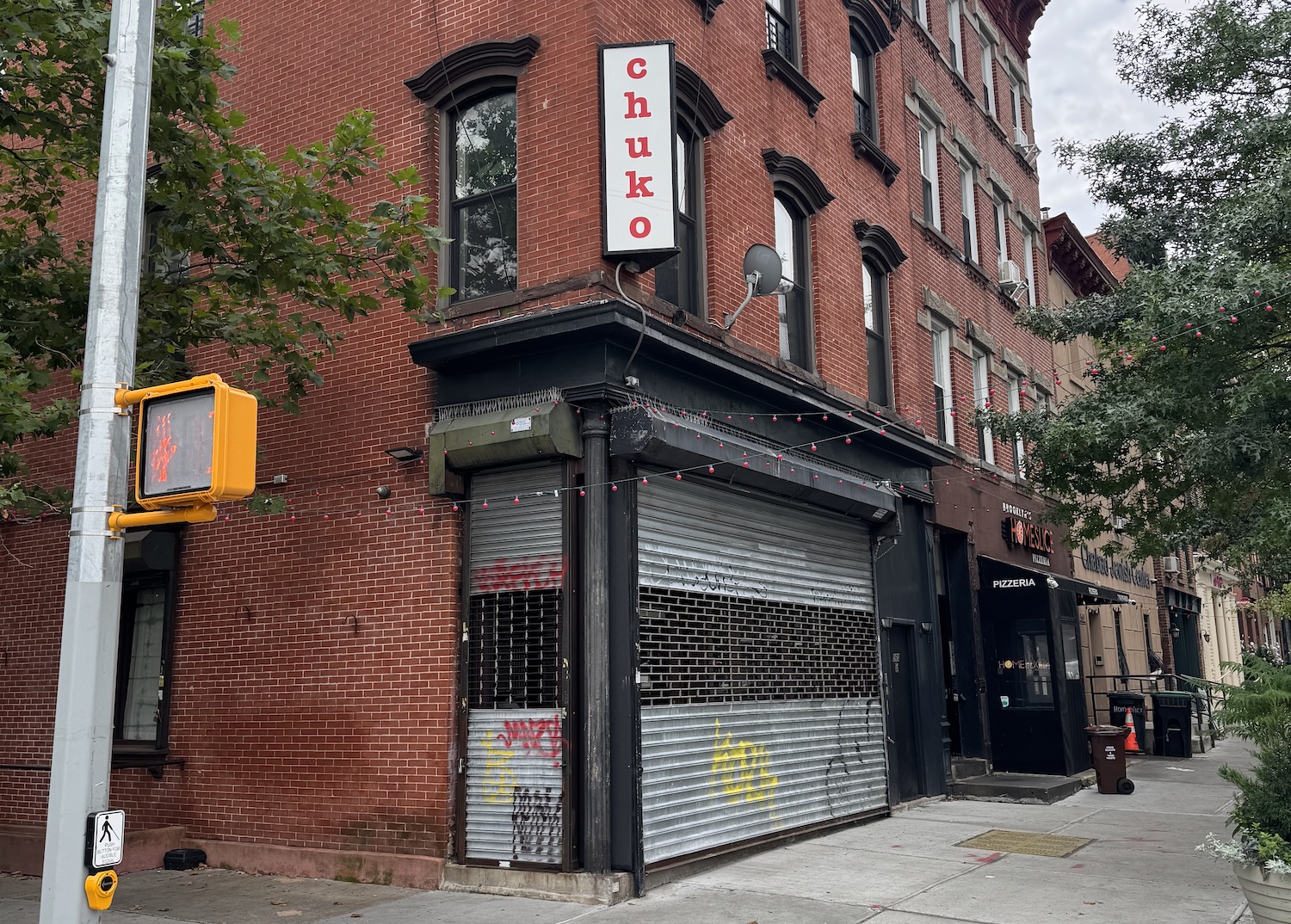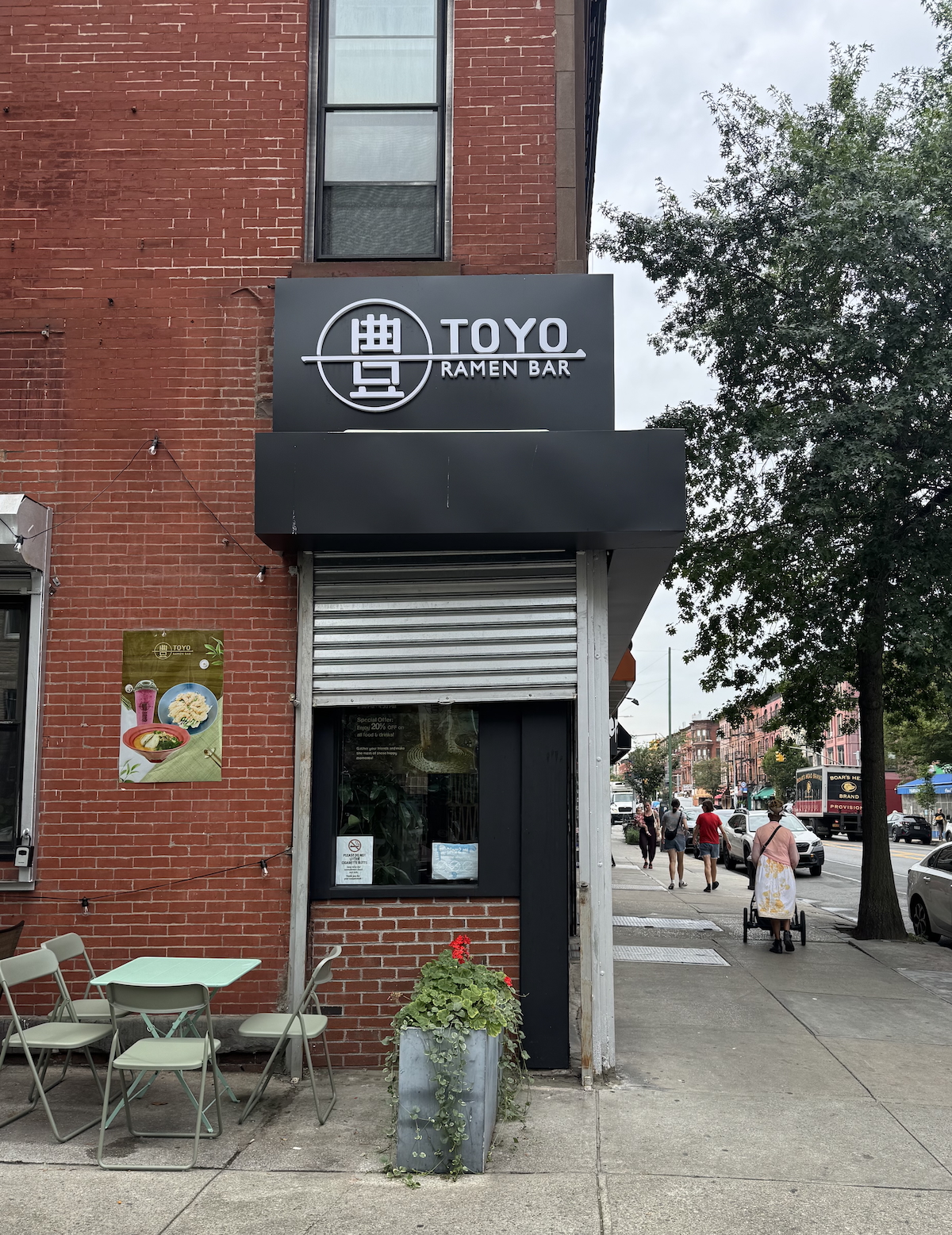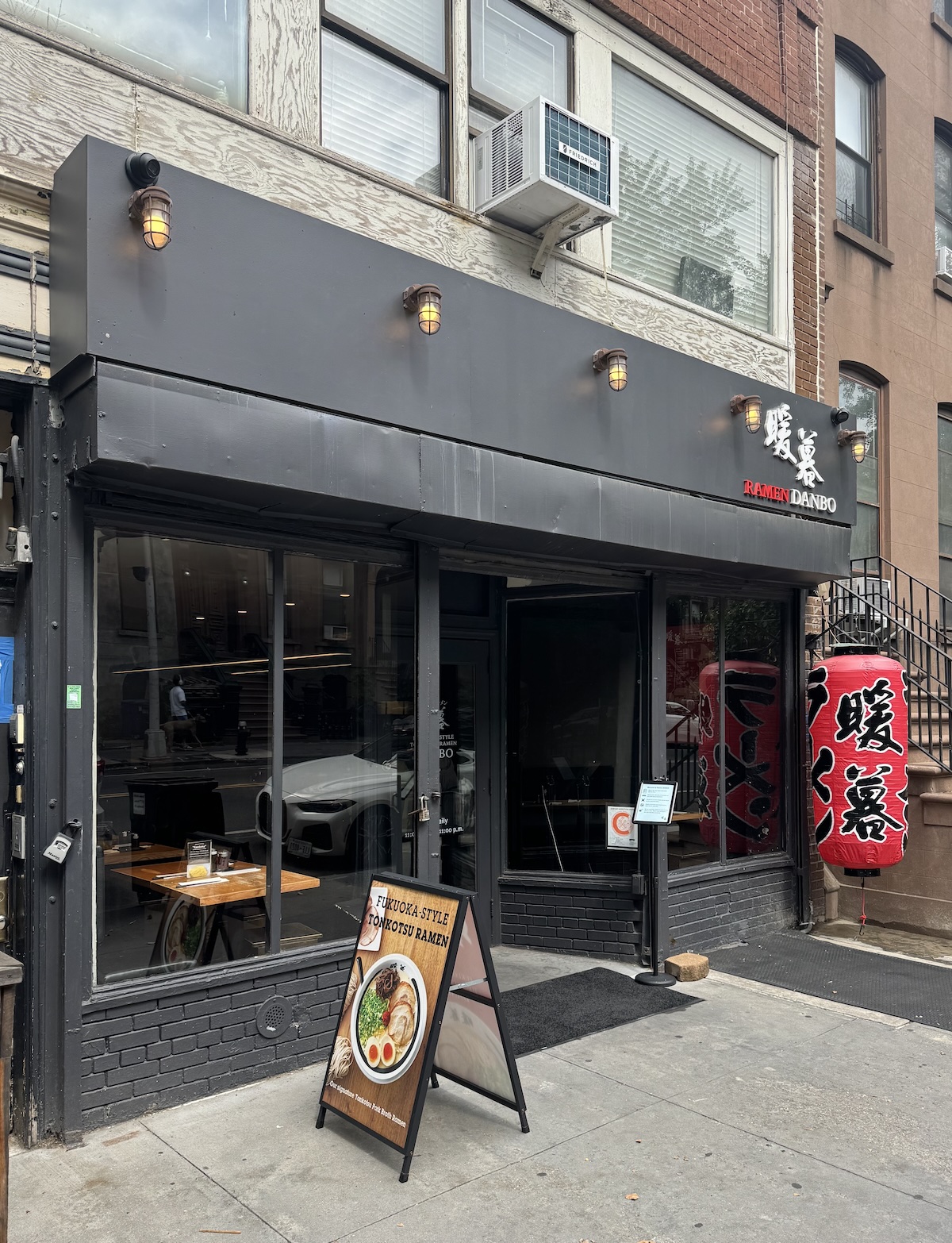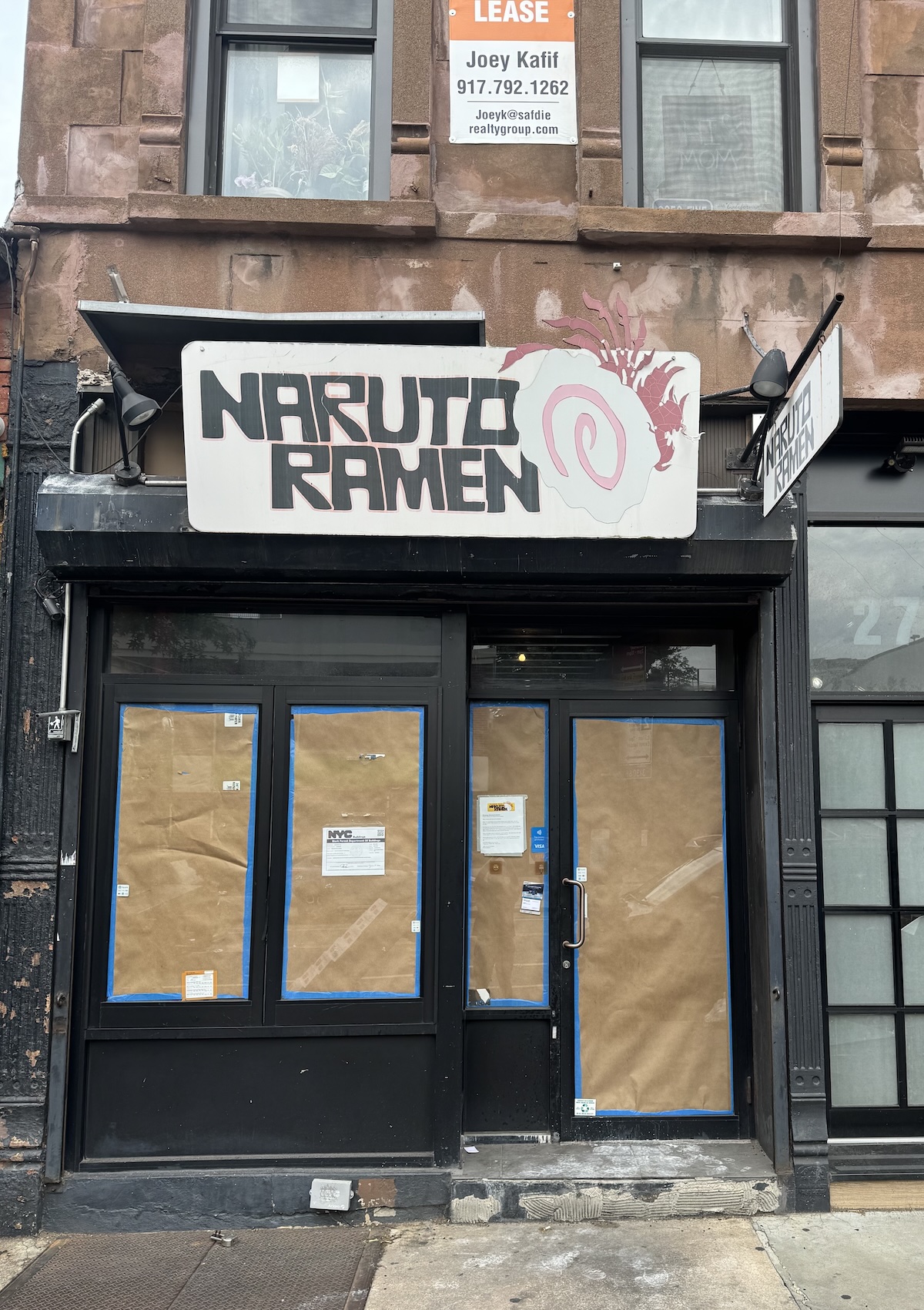“Ramen Weather” is a Construct. In NYC, it’s Killing an Industry.


“It is terrible. One of the worst summers we’ve experienced in almost 15 years,” says Chef Jamison Blankenship, apoplectic, apocalyptic as he laments over the phone in the midst of a sweltering July afternoon. We’re discussing a seasonal crisis specific to his restaurant Chuko in Prospect Heights, a 14-year-old neighborhood institution that helped define a generation of New York ramen shops in the 2010s. But it is also a problem any New York ramen purveyor can relate to: The Summer fucking blows.
If you’re an American-born New Yorker, this probably seems like an intuitive hazard of doing business in this medium. During the hottest months in this city—which has been classified as a sub-tropical climate since 2020—who in their right mind would want to pull up for a meal of noodles sunk into an Olympic-sized swimming pool of steaming, collagen-rich broth? But diners elsewhere may not be familiar with the concept of “Ramen Weather.” It’s a phenomenon largely confined to the Northeast, and it’s badly stunting the growth of a once thriving, now arguably in decline genre of cuisine in our city.

(Photo by Abe Beame)
“Historically, we have a full quarter loss that we factor in and plan for all year, every single year. That requires a lot of planning and a lot of luck. You need three strong, solid seasons, and you have to tuck money away during those seasons to survive,” Blankenship says. “We’ve toyed with every possible idea. Do we close for two months? But then we still pay rent, and we don’t want to lay off our employees because we have such a good team. We’ve done lunch, we haven’t done lunch, we limit hours, we extend hours, nothing works.”
Blankenship describes the summer slump as a choose-your-own-adventure proposition, with every choice leading to the bottom of a pit of spikes. It is frankly an insane business model for any restaurant anywhere, but particularly one in New York in 2025, in an eternal exponential state of margins slimming and overhead exploding, where even beloved cool kid restaurants that appear invulnerable from the outside are closing en masse.
At Chuko, the kitchen team has spent nearly a decade and a half doing the thankless work of trying to crack the summer ramen code. “We’ve done quite a few things with cold Ramen. We do a hyashi chuka with cold raw vegetables, acidic ponzu, crab meat, egg, tomato, cucumber, a bit of spicy mustard on the side. We do the cold soy. It’s a chilled veggie soy broth with cold noodles, cucumber and onion and cilantro and lime and chilies, bit of Yuzu kosho on the side. We do these things that are not hot soup items, hoping to entice people, and they actually do well, we’re just not getting the volume, the foot traffic,” Chef says, with the frustrated passion of a kid who can’t pass a test no matter how hard he hits the books.
New York’s haute ramen culture is still getting on its feet. It’s just two decades old, depending on when you believe its postmodern era begins (Ramen itself is roughly a century old, and New York’s first ramen shop dates back to 1975, but we’re referring specifically to the high-end explosion of the cuisine in the aughts). As recently as Chuko’s beginnings in the early 2010s, the restaurant still faced the dumbass perception of a market trying to grapple with the idea of paying $11 for something you can buy at a grocery store for a buck. There are some geographical elements of New York and East Coast cities like it that make it a distinct market. Our seasons are more pronounced than burgeoning ramen markets on the West Coast, or in the South, where the very concept of cold weather is relative and there is little to no blustery weather to save your ramen lunch for. But beyond any pragmatic factor of climate and geography, the “ramen weather” question speaks to the inexact alchemy of culture, of a city and its customs. To our developing tendencies and the prejudices that inform these tendencies.
Kenshiro Uki grew up in a part of the world that never gets ramen weather. He’s from Hawaii, but now lives in New York, where he serves as the North American president of his family’s business, Sun Noodle, the mega purveyor that makes the noodles in many bowls of ramen across the country. “In Hawaii, it’s 75-80 degrees all year long, and we would eat noodles, hot noodles in soup, every day. But also, in Hawaii, it’s diverse, where Asian ethnic backgrounds are the majority, which is a culture where noodles are much more prominent in your diet,” Ken says. Being in the noodle business, Ken is able to ascertain by the order how the fortunes of New York’s ramen shop are changed by the season. His projections are grim. “We’ll see a drop of about 50%, about half of what an average store will do in the winter versus the summer.”
To Uki, some of the problem is a question of education. New York currently has shops that specialize in lighter ramen styles such as tsukemen, at Okiboro, and mazemen, at Niche—both in L.E.S.—but these “alternative” styles have had limited success in the past, and generally, New York lags behind markets on the west coast when it comes to ramen diversity, once again speaking to the perceptions of a dining culture with a fixed and limited idea of what ramen is and what it can be. “In New York, ramen is comfort food you warm yourself up with, or cure a hangover with. In California, there are a lot more types of ramen shops, and when they come to the East Coast, it often doesn’t work,” Ken says. “We see the differences in the styles of noodles sold in these restaurants. This one shop that does a few different ramen bowls has multiple locations in California, Texas, and New York, and the thick noodle for tsukemen sells at completely different volumes of purchase depending on the location. In California, it is 50-50, maybe even 70-30 to their thin noodles for broth, depending on the season, but on the East Coast, it’s the exact opposite. People just want their traditional bowls of ramen here.”
“I don’t know. It’s a lot of food, sure. It’s a lot of calories, sure. But so is everything else, right? A big bowl of Bolognese in August is no fucking different. Like, come on, you know? Let’s get with it,” Chuko’s Blankenship pleads, exasperated.

(Photo by Abe Beame)
The ramen scene in New York has largely stagnated. Every few years, a new export will open, like an Okiboro, in the style of the single-item specialty shops that have ported over from Japan and defined this era of ramen in New York. The once more prevalent domestic concepts from ramen-obsessed New York chefs have largely gone away, and you can understand why. For this cuisine to truly break through into the pantheon of New York’s great, ubiquitous comfort food staples alongside pizza, burgers, and sushi, ramen needs a following as devout and mainstream as those other classics, which depends on a year-round, weatherproof business that can support all the creativity and diversity found in areas where ramen proliferates abroad.
Rasheeda Purdie is one of New York’s biggest and brightest ramen success stories this decade, a Black woman from the south who opened a six-stool ramen counter on the Bowery and became an overnight celebrity chef, with her inventive and culturally adventurous approach to ramen that was once more commonplace in the city’s ramen ecosystem. Rasheeda broke with much of the conventional thinking New York ramen shops generally ascribe to. She is opening her own brick and mortar shop in the East Village soon, but on Bowery she was a one woman show, her counter would both open and close early, and she would sell reservations online, which resulted in daily seatings sold out 30 days in advance, and freedom from the whims of summer many larger and less nimble ramen restaurants are susceptible to.
Rasheeda has also mined her cultural heritage with seasonal ramens like her cold watermelon shio, transgressive bowls that stretch the definition of ramen itself, and point towards a future in which we may have to accept and adapt to the New York aversion to traditional ramen in warm weather if the cuisine is going to truly thrive here. “For me, the summer menu starts with Juneteenth, and there was demand for the watermelon shio right away because it feeds into the holiday, even in the middle of June. Then, for July, I did a salmon ceviche, which is another chilled ramen with spinach noodles. Then for August I created a spicy cucumber. I keep my standards on the menu, but I want to stay flexible, so if there’s a 100-degree Saturday, I can always switch it up,” Rasheeda tells me.

(Photo by Abe Beame)
As a kind of ambassador of ramen, both a seller of noodles and evangelist of ramen culture, Kenshiro Uki is also doing his part to show New Yorkers a bowl can and should always be an option in your restaurant rotation, to change the hearts and minds of a city. “We’re trying to help our customers through the summer months because they’re so painful for the operators. If you have one bad winter, it can kill a ramen shop, which is an incredibly high bar for survival. That starts with awareness. We’re going to test the theory: Can cold ramen be accepted here? Something that really inspired me is I spoke to the folks at Starbucks, and they told me iced coffee has now overtaken hot coffee consumption globally, especially in the US, which gives me hope that it is possible to change people’s tastes and habits.”
That change may not come fast enough for Jamison Blankenship at Chuko and all the ramen shops in Brooklyn that have fought the uphill summer battle for years, who are slowly wearing down. “Everything is more expensive. Our rent had almost doubled from when we signed our new lease. Labor has gone up tremendously. DoorDash makes a nice portion of our business, and those fees are going up. It’s tough. We’re gonna see how the summer goes. We’re contemplating whether or not we wanna do this again because it takes a toll, and it’s very stressful and requires a lot from us. And then it stops being fun, you know?”
If the business elects to pack it in before next summer, it would be a tragedy. The ramen shop Minca in the East Village just closed after a magnificent 21-year run because its owner Shigeto Kamada simply wants to retire. It’s the exact type of neighborhood institution Chuko is, that Brooklyn and this city needs more of to maintain its ramen footprint and a thriving ramen scene, and the kind of on-his-own-terms final chapter chef Jamison and his partners and their great, modest restaurant have earned.
A few weeks ago, I took my daughter out of camp early and we went to catch a matinee at the Essex Regal. I asked her what she wanted for lunch beforehand, and as she often does, she said ramen. So we walked across Delancey to Nakamura, an old favorite of hers. We sat in air conditioning, and she fucked up a bowl of their delightful, light chicken bone broth, and so did I. It was every bit as satisfying as any bowl I’ve crushed in the dead of winter. And I watched her nibble on her poached egg and chashu with her kids’ chopsticks, as she’s done often through the summers of her childhood. It was too common an occurrence for me to be proud, but I had already started working on/thinking about this piece, and it made me hopeful. Because the way you fight a war, not of pragmatism, but perception, is by attrition. Year-round ramen might be lost on the first postmodern generation of New York ramen eaters, but maybe we’ll get it right next time.
The post “Ramen Weather” is a Construct. In NYC, it’s Killing an Industry. appeared first on BKMAG.






